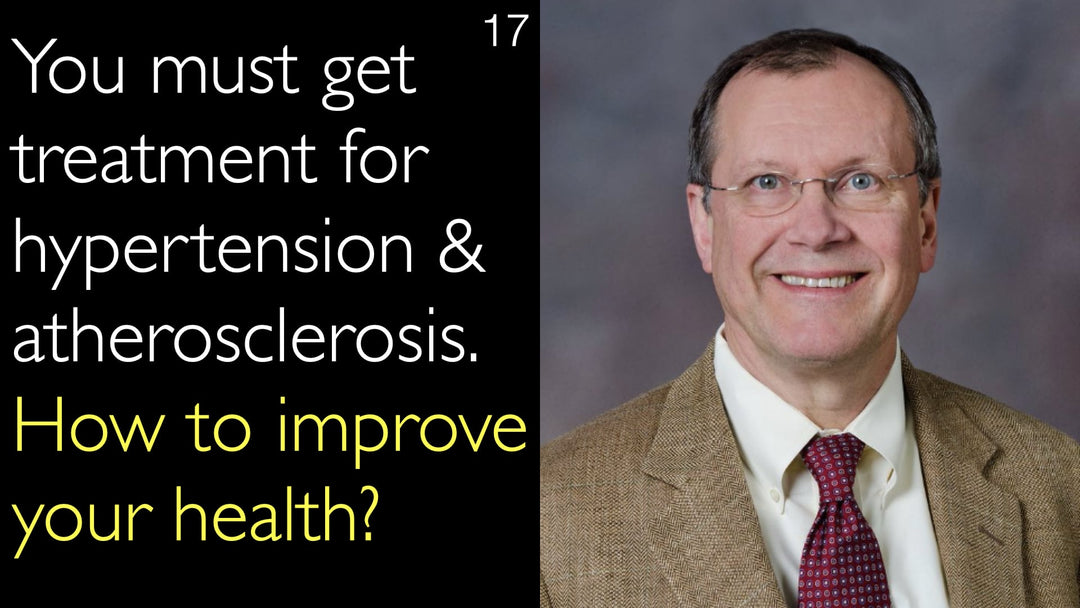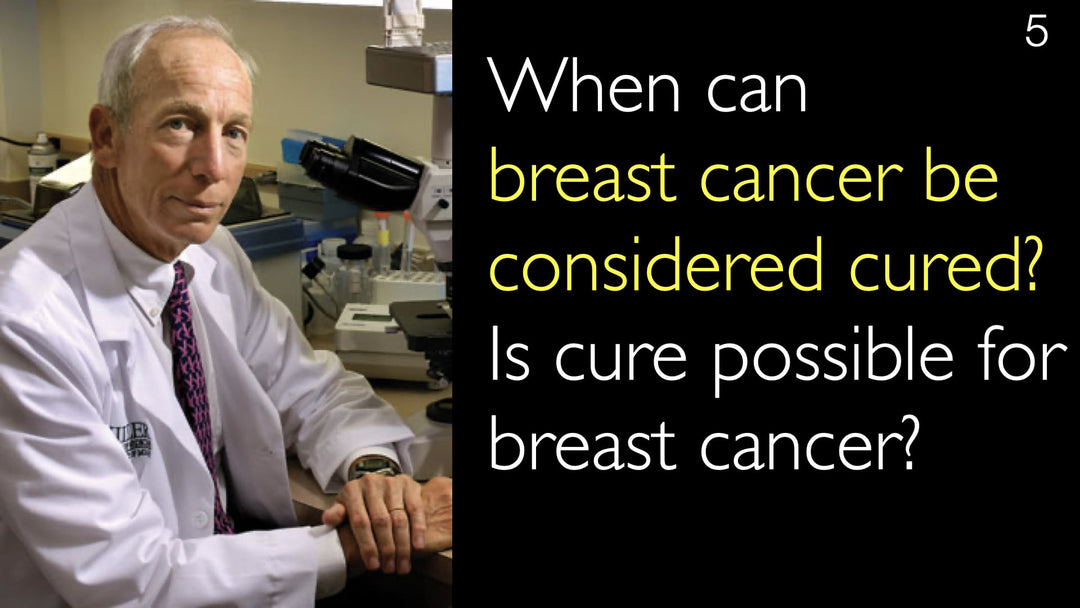Leading expert in pulmonary vascular disease and dyspnea, Dr. Aaron Waxman, MD, explains the critical delays in diagnosing shortness of breath. Patients often wait two years and spend over $100,000 on repeated, inconclusive tests. Dr. Waxman advocates for a multidisciplinary team approach to break down specialty silos. His program can typically provide a correct diagnosis within six weeks. Finding the right expert early saves significant time, money, and patient suffering.
Diagnosing Unexplained Shortness of Breath: A Multidisciplinary Approach
Jump To Section
- Diagnostic Delays and Costs
- Pitfalls of Specialty Silos
- Multidisciplinary Team Advantage
- Value of an Expert Second Opinion
- Treatment Protocols and Outcomes
- Full Transcript
Diagnostic Delays and High Costs for Breathlessness
Patients with unexplained shortness of breath face a long and expensive road to a correct diagnosis. Dr. Aaron Waxman, MD, states that the average time to diagnosis is about two years from the initial onset of symptoms. During this period, patients frequently undergo countless tests. The financial burden is immense, with costs often reaching between $100,000 and $150,000.
Pitfalls of Specialty Silos in Medicine
A major barrier to efficient diagnosis is the siloed nature of medical specialties. Dr. Aaron Waxman, MD, explains that physicians often pigeonhole patients into common diagnoses within their field. This approach can be completely wrong for the actual cause of a patient's breathlessness. When a doctor cannot treat the symptom, they frequently order more tests, even repeating ones that have already failed to provide an answer. This cycle wastes precious time and resources.
The Multidisciplinary Team Advantage for Dyspnea
The solution to diagnostic challenges is a collaborative, multidisciplinary team. Dr. Aaron Waxman, MD, leads a unique program that includes pulmonologists, cardiologists, rheumatologists, radiologists, and surgeons. This team crosses traditional specialty boundaries to think more broadly about each case. This open-minded approach is crucial for investigating complex symptoms thoroughly. It also generates important research questions to advance the field.
The Value of an Expert Second Opinion
Seeking a remote expert medical second opinion can dramatically shorten the diagnostic journey. Dr. Aaron Waxman, MD, emphasizes that patients should try to find the correct medical expert for their symptoms early on. Sending medical records to a specialized center for review can save years of frustration and enormous expense. Dr. Anton Titov, MD, and Dr. Waxman agree that this is a powerful application of modern technology in healthcare.
Personalized Treatment Protocols and Outcomes
A correct diagnosis leads directly to effective, personalized treatment. Dr. Aaron Waxman, MD, notes that his team has a treatment protocol for every diagnosis they uncover. Their approach is based on understanding the physiology of breathlessness, allowing for flexible and tailored therapy. While appointment scheduling can be a challenge, the program aims to provide a diagnosis within about six weeks of evaluation. This swift turnaround enables patients to start the right treatment at the right time.
Full Transcript
Dr. Anton Titov, MD: Patients with shortness of breath spend two years to get a correct diagnosis. They often spend up to $150,000 on diagnostic tests and consultations. Doctors often repeat the same tests even though these tests have not provided an answer.
Leading lung disease expert explains. Shortness of breath is such a common symptom. Requirement to diagnose shortness of breath properly is a very important point. Because it is important to investigate breathlessness thoroughly and with an open mind.
Dr. Aaron Waxman, MD: A physician cannot silo a patient into a common diagnosis. The diagnosis could be wrong; it might have nothing to do with the causes of the patient's shortness of breath. This is the biggest problem that we have in a lot of aspects of medicine. It is how we have siloed our specialties.
Here is a unique feature of our pulmonary vascular program and our dyspnea program. We are a group of clinicians that includes pulmonologists, cardiologists, rheumatologists, and radiologists. But we cross boundaries of our specialties. We even have surgeons who are part of our clinical group.
It allows us to think much more broadly and open-mindedly. It also gives us lots of questions that we can then address from a research standpoint.
Dr. Anton Titov, MD: This is the theme that I clearly hear from many medical experts. A multidisciplinary approach to diagnosis. This is crucial for finding the best treatment for any disease.
Dr. Aaron Waxman, MD: Yes. It is the only way forward in medicine. A patient might have experienced certain symptoms. Some physicians then tell this patient, "Oh, you have this or you have that diagnosis.” It may be worthwhile to investigate the symptoms in more detail.
It’s crucial to find the right expert. An expert who will dig into the real causes of the patient’s symptoms. It is not easy to make a correct diagnosis, but nevertheless it is worthwhile for the patient.
We went back and looked at our patient population. We probably see on the order of two or three hundred new patients every year with unexplained shortness of breath.
We are following well over a thousand patients at this point. We learned that the average time to diagnosis for the patients with shortness of breath is about two years. This is the patients we have seen.
Time period to diagnosis means from the time patients started to complain of breathlessness to the time they got to our evaluation. These patients have been complaining of shortness of breath for at least two years.
Over those two years, many times people have spent upwards of $100,000 to $150,000 on diagnostic testing.
Physicians were repeating diagnostic tests over and over again. Because physicians want to do something for the patient. If a physician cannot treat something, they are often going to order a diagnostic test.
Even though that diagnostic test has been done before. Even if it hasn't shown an answer. It is what the physicians are comfortable with. They are comfortable with repeating the same diagnostic tests again and again.
A lot of money is spent. A lot of time is wasted in getting these patients a correct diagnosis. Patients could have used modern technology to get the correct diagnosis.
Patients could receive a remote expert medical opinion. They could send the medical information to the correct expert in shortness of breath diagnosis. Patients with shortness of breath should try to find the correct medical expert to find a cause of their symptoms.
It could have saved both time and money. Getting the right diagnosis means receiving appropriate treatment for shortness of breath at the right time.
Dr. Anton Titov, MD: Correct! That is the key.
Dr. Aaron Waxman, MD: For us, by the time a patient knocks at our door, we can usually give that patient a correct diagnosis. Only because the scheduling issues could be a problem. We are booked out for patient appointments months in advance now.
Within six weeks, we can usually give a correct diagnosis to any patient with shortness of breath. For every diagnosis we find, we do have a treatment protocol. Effective treatments are evolving as time goes on.
We have learned a lot about these diagnoses. We are thinking about treatment for shortness of breath on a physiologic basis. It allows us to be flexible and to tailor therapy to that patient.
It pays to get to the correct experts! Everything is about finding the right person.







